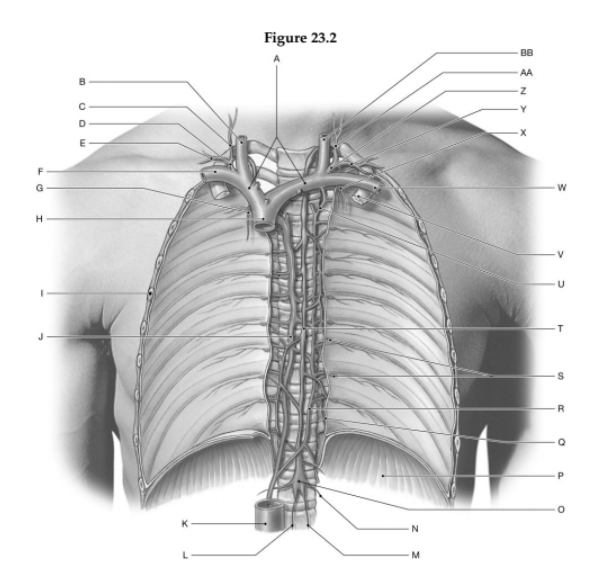Inguinal hernias are associated with a weakness in the
A. linea alba.
B. axillary border.
C. umbilicus.
D. superficial inguinal ring.
E. pubic tubercle.
Answer: D
You might also like to view...
The amount of ADH that is secreted by the posterior pituitary glands varies with
a) blood osmotic pressure. b) blood calcium levels. c) blood oxygen levels. d) blood glucose levels. e) All of these choices.
Which hormone ultimately stimulates the activity of osteoclasts and promotes increased calcium absorption in the digestive tract?
A. Triiodothyronine B. Calcitonin C. Parathyroid hormone (PTH) D. Growth hormone (GH) E. Somatostatin
Using the figure below, identify the labeled part.

1. Label A: ______________________________
2. Label B: ______________________________
3. Label C: ______________________________
4. Label D: ______________________________
5. Label E: ______________________________
6. Label F: ______________________________
7. Label G: ______________________________
8. Label H: ______________________________
9. Label I: ______________________________
10. Label J: ______________________________
11. Label K: ______________________________
12. Label L: ______________________________
13. Label M: ______________________________
14. Label N: ______________________________
15. Label O: ______________________________
16. Label P: ______________________________
17. Label Q: ______________________________
18. Label R: ______________________________
19. Label S: ______________________________
20. Label T: ______________________________
21. Label U: ______________________________
22. Label V: ______________________________
23. Label W: ______________________________
24. Label X: ______________________________
25. Label Y: ______________________________
26. Label Z: ______________________________
27. Label AA: ______________________________
28. Label BB: ______________________________
What is the gastrin?
What will be an ideal response?